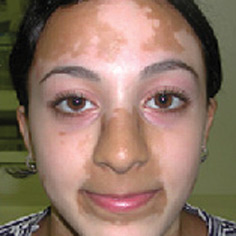Vitiligo: its nature
Vitiligo, a skin disorder affecting approximately 1-4% of people the world over, is characterized by the loss of skin pigmentation due to the death of melanocytes or the malfunction in these cells which are responsible for rendering skin coloration. It is known to be hereditary, and genetic defects are known causes.
Inflammatory and autoimmune diseases like thyroid underexpression and overexpression have been linked to vitiligo occurrences. This disorder may be classified into three types. However, it is highly likely for vitiligo patients themselves to be unaware of the difference between segmental vitiligo and nonsegmental vitiligo. Here, we will have an overview of the 3 vitiligo types:
Nonsegmental vitiligo
Nonsegmental vitiligo, or NSV, is the most common type of this disorder. It is characterized by white skin patches that do not have a specific area of occurrence – that is, they can be seen anywhere on the body, and they are often symmetrical. This means that if the patches appear on, say, behind the right knee, then nearly the same-size patch can also be seen behind the left knee. Similarly, if they appear around the right corner of your mouth, then they are also likely to appear on your mouth’s left side.
Segmental vitiligo
This type of vitiligo, on the other hand, is similar to NSV in appearance, but it is usually associated with the term “focal” as it develops in a limited area. These are often unilateral white macules that do not follow Blaschko lines or cross the midline. Segmental vitiligo (SV) patches are small at their initial stages but can grow huge eventually, and it spreads more quickly than nonsegmental vitiligo. It also is not associated with autoimmune diseases, or at least there is a significantly reduced association than in generalized vitiligo. However, studies have shown immune-mediated overlaps between the two kinds of vitiligo.
Segmental vitiligo has to be cured at the right time before it progresses and spreads all over the body. The upside is that even if it spreads more quickly, it is also more treatable during the early stages, and topical treatments have been effective in its treatment.
SV tends to affect skin areas that have something to do with the dorsal roots from the spine and as mentioned, they are often unilateral. A large white patch may appear on the back of your right hand, while there is no sign of any patch on the back of the left hand.
Mixed vitiligo
This type features both types – segmental and nonsegmental – simultaneously in a person.
Treatment for segmental vitiligo
- Topical corticosteroids
- Topical immunomodulators (also known as calcineurin inhibitors)
- Phototherapy (NB-UVB, PUVA)
- Excimer laser
- Miscellaneous therapies, such as low-energy helium-neon laser
- Surgical treatment
Although all of these treatment options are considered for segmental vitiligo treatment, some are found to be more effective than others. For instance, based on studies, treatments such as topical calcineurin inhibitors, topical corticosteroids, targeted phototherapy such as excimer laser, and phototherapy such as NB-UVB, are all helpful for segmental vitiligo. Research has also suggested that a combination of phototherapy and topical treatment is also more effective than any kind of monotherapy.
Nonsegmental & Segmental vitiligo Explained,





















